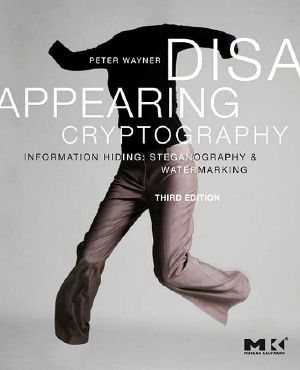Disappearing Cryptography

- Authors
- Wayner, Peter
- Publisher
- Morgan Kaufmann Publishers
- ISBN
- 9780123744791
- Date
- 1996-01-01T00:00:00+00:00
- Size
- 3.44 MB
- Lang
- en
In a time of electronic espionage, this new edition of our best-selling title ensures the security and confidentiality of your electronic content, communication and commerce!
Disappearing Cryptography, Third Edition delves deep into steganography by delineating a number of different methods to hide and therefore protect information in all types of digital media files. During the last five years, the continued advancement and exponential increase of computer processing power have enhanced the efficacy and scope of electronic espionage and content appropriation. Therefore, this new edition amends and expands on outdated sections by focusing on new dangers, and includes five completely new chapters that introduce newer more sophisticated and refined cryptographic algorithms and techniques (such as fingerprinting, synchronization, and quantization) capable of withstanding the most evolved forms of attack.
Each chapter provides an introduction and a high-level summary enabling the reader to understand the concepts without wading through technical explanations, and presents detailed, concrete examples for those who want to implement the algorithms or write their own programs. This combination of practicality and theory allows programmers and system designers to not only implement tried and true encryption procedures, but also to consider future developments in their designs, thus fulfilling the need for preemptive caution that is becoming even more explicit as the transference of digital media escalates.
Includes five new chapters that delineate the most current and sophisticated cryptographic algorithms, allowing readers to protect their information against even the most evolved electronic attacks.
Conceptual tutelage in conjunction with detailed mathematical directives allows readers to not only understand encryption procedures, but also to write programs which anticipate future security developments in their design.
Access to online source code for implementing proven cryptographic procedures such as data mimicry and reversible grammar generation into their own work.